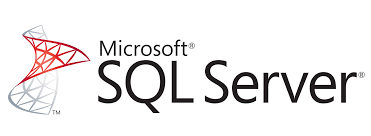Understanding SQL Server Numeric Data Types: Optimizing Database Performance and Storage
Table of Contents
- Overview of SQL Server Numeric Data Types
- Detailed Explanation of SQL Server Numeric Data Types
- Choosing the Right Numeric Data Type for Your Needs
- Conclusion
Overview of SQL Server Numeric Data Types
SQL Server offers a variety of numeric data types to handle different ranges, precision, and storage requirements:
- TINYINT
- SMALLINT
- INT
- BIGINT
- DECIMAL (and NUMERIC)
- FLOAT
- REAL
- SMALLMONEY and MONEY
Each of these types has specific use cases, and choosing the right one depends on the numeric range and precision requirements of your application.
Detailed Explanation of SQL Server Numeric Data Types
1. TINYINT
Purpose: Stores small, non-negative integer values.
Range: 0 to 255
Storage Size: 1 byte
Use Case: Suitable for values that require minimal storage, such as flags or counters.
2. SMALLINT
Purpose: Stores small integer values.
Range: -32,768 to 32,767
Storage Size: 2 bytes
Use Case: Ideal for smaller ranges, such as age or small item quantities.
3. INT
Purpose: Stores typical integer values.
Range: -2,147,483,648 to 2,147,483,647
Storage Size: 4 bytes
Use Case: Commonly used for most integer storage needs, such as primary keys and counters.
4. BIGINT
Purpose: Stores large integer values.
Range: -9,223,372,036,854,775,808 to 9,223,372,036,854,775,807
Storage Size: 8 bytes
Use Case: Useful for large numerical data, such as population counts or financial records.
5. DECIMAL (and NUMERIC)
Purpose: Stores fixed precision and scale values.
Range: Varies, but can store very precise values
Storage Size: Varies with precision, up to 17 bytes
Example: DECIMAL(10, 2) for currency values
Use Case: Suitable for precise financial calculations where accuracy is critical.
6. FLOAT
Purpose: Stores approximate numerical values with floating precision.
Range: Approx. ±1.79E+308 (with varying precision)
Storage Size: 4 or 8 bytes
Use Case: Used in scientific calculations where precision varies and minor inaccuracies are acceptable.
7. REAL
Purpose: Stores less precise floating-point values.
Range: Approx. ±3.40E+38
Storage Size: 4 bytes
Use Case: Appropriate for applications that don’t require high precision, like certain graphics data.
8. SMALLMONEY and MONEY
Purpose: Store monetary values with fixed precision.
Range:
SMALLMONEY: -214,748.3648 to 214,748.3647
MONEY: -922,337,203,685,477.5808 to 922,337,203,685,477.5807
Storage Size:
SMALLMONEY: 4 bytes
MONEY: 8 bytes
Use Case: Suitable for financial data where decimals are required, like bank balances.
Choosing the Right Numeric Data Type for Your Needs
Choosing the correct numeric data type can significantly impact database performance:
- TINYINT: Use for minimal storage with non-negative values, such as status codes.
- SMALLINT: For values with limited range, such as quantities and scores.
- INT: The default choice for integer values; widely supported and efficient.
- BIGINT: Ideal for large numbers, like population or revenue data.
- DECIMAL: For precise calculations, especially in finance.
- FLOAT: For scientific calculations that accept floating precision.
- REAL: Use when memory is limited and precision isn’t critical.
- MONEY: For monetary data that requires fixed-point decimals.
Comparison of Numeric Data Types
| Data Type | Range | Precision | Storage Size |
|---|---|---|---|
| TINYINT | 0 to 255 | Integer | 1 byte |
| SMALLINT | -32,768 to 32,767 | Integer | 2 bytes |
| INT | -2,147,483,648 to 2,147,483,647 | Integer | 4 bytes |
| BIGINT | -9,223,372,036,854,775,808 to 9,223,372,036,854,775,807 | Integer | 8 bytes |
| DECIMAL | Varies | Fixed Precision | Up to 17 bytes |
| FLOAT | ±1.79E+308 | Floating Point | 4 or 8 bytes |
| REAL | ±3.40E+38 | Floating Point | 4 bytes |
| SMALLMONEY | -214,748.3648 to 214,748.3647 | Fixed Point | 4 bytes |
| MONEY | -922,337,203,685,477.5808 to 922,337,203,685,477.5807 | Fixed Point | 8 bytes |
Conclusion
Selecting the correct numeric data type can streamline database management and improve storage efficiency. Always consider the specific numeric needs of your data to ensure optimal database performance.
